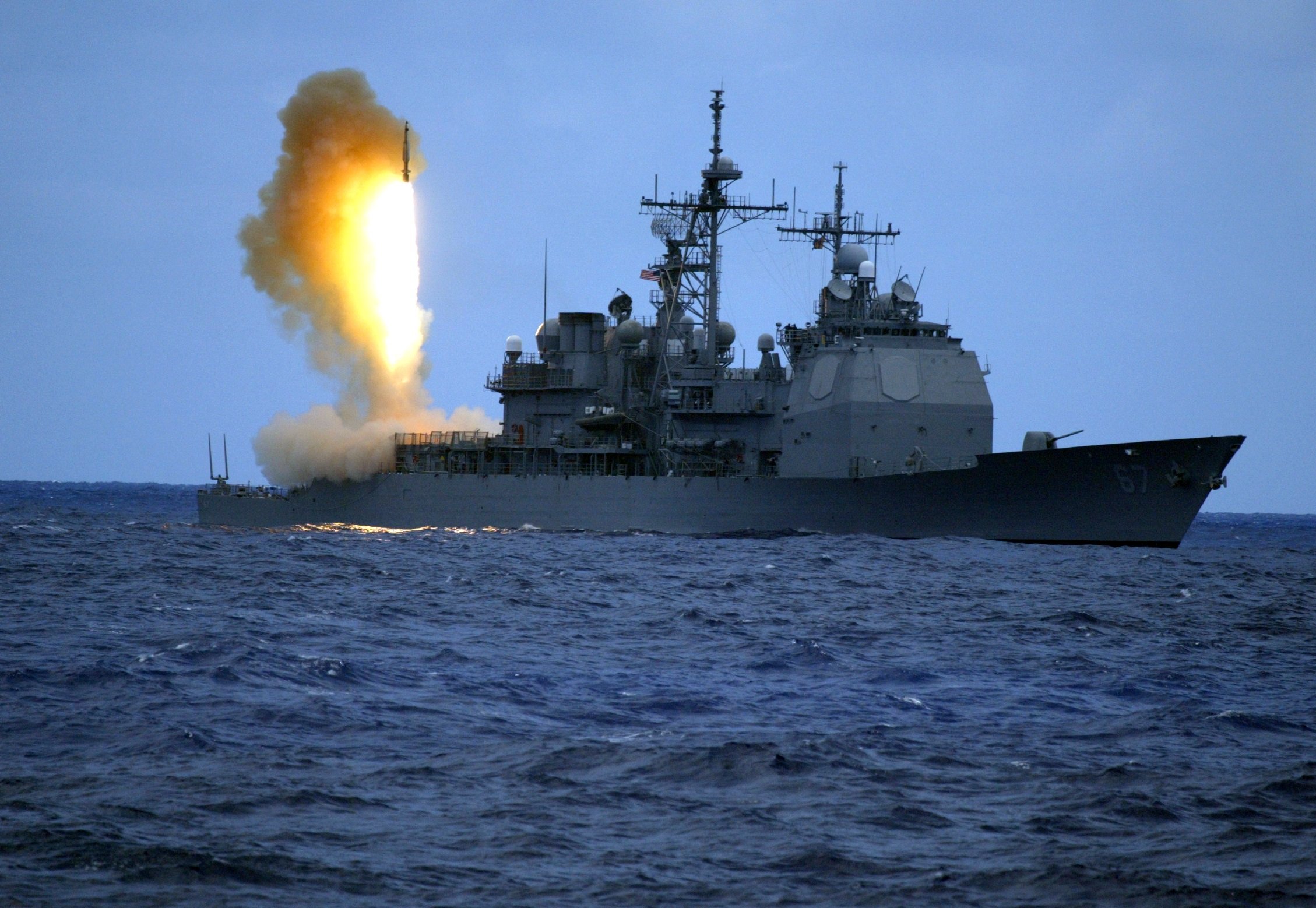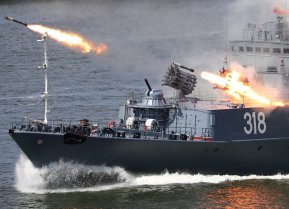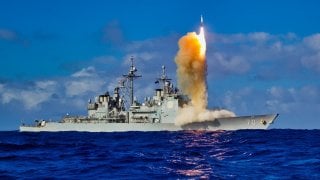Where Did the Houthis Get Anti-Ship Ballistic Missiles?
Houthi rocketeers have fired an anti-ship ballistic missile (ASBM)—a genre of weaponry ostensibly possessed only by China’s People’s Liberation Army (PLA) Rocket Force—against merchant shipping.
In recent weeks Houthi rebels fighting for control of Yemen have lashed out at mercantile shipping in the Bab el-Mandeb Strait and southern Red Sea indiscriminately, in hopes of stemming the flow of goods to Israel and raising the price of seaborne trade for countries that back the Israeli campaign in Gaza. Yemen sits astride the critical juncture between the Red Sea and Indian Ocean, making such a campaign possible. But while the low-grade maritime war has made headlines, giving rise to a multinational coalition to defend freedom of the sea, reportage has muffled a glaring point about the war almost into silence.
How did Houthi Rebels get Anti-Ship Ballistic Missiles (ASBM)?
Specifically, on at least one occasion, Houthi rocketeers have fired an anti-ship ballistic missile (ASBM)—a genre of weaponry ostensibly possessed only by China’s People’s Liberation Army (PLA) Rocket Force—against merchant shipping. On December 3 the U.S. Central Command, which oversees U.S. military operations in the Middle East region, reported that Yemeni rebels had lofted an antiship ballistic missile toward the U.K.-owned, Bahamanian-flagged cargo ship Unity Explorer. No less an authority than The Economist confirmed the ASBM attack.

This is a big deal.
No disrespect to the Houthi scientific-technical enterprise, which I’m sure is formidable, but it strains credulity to believe a substate group—and a group that happens to be supported by the Islamic Republic of Iran, an informal client of China—has mastered technology that’s beyond everybody except Chinese engineers.
So is Beijing proliferating missile technology? It sure looks that way. Occam’s Razor says so. Whether it’s doing so inadvertently or deliberately is another question. Now, Chinese Communist Party potentates are on record opposing missile proliferation. China is not a party to the Missile Technology Control Regime (MTCR), the informal nonproliferation body that strives to clamp down on the spread of guided missiles that could be used to deliver unconventional or conventional payloads. But it has applied for MTCR membership and agreed to enforce the regime’s guidelines on stemming proliferation while its application for membership remains under review.
Unwitting proliferation is a possibility. During the founding decades of the People’s Republic of China, in fact, the imperative to proliferate arms was etched on the institutional culture of the PLA. The armed forces had every incentive to arm others for cash. They had to raise much of their own budget amid straitened finances. Those habits of mind and deed persisted into the post-Cold War years. It’s not impossible that illicit transactions could take place unbeknownst to the Chinese Communist Party.
But even if the impulse to proliferate persists within China’s military, it seems doubtful it would extend to surreptitiously exporting frontline armaments such as antiship ballistic missiles. As noted up front, the PLA has, or until recently had, a monopoly on ASBMs. That’s a monopoly worth guarding. Rocket Force DF-21D and DF-26 missiles anchor China’s anti-access and area-denial network, affording commanders the option to strike not just land targets but moving ships at sea up to 2,000 nautical miles distant. That PLA overseers, acting on their own, would transfer a weapon system of such potency to Iran—whence it might find its way into the Houthi, Hamas, or Hezbollah arsenals, given Tehran’s proclivities—seems a stretch. Military officialdom would balk at a move of that political magnitude.
Or so you would think.
Which leaves conscious choice on the part of party leaders. There is sound strategic logic behind proliferating ASBMs around the Eurasian perimeter, even though the blowback from putting this novel technology in unpredictable hands could prove severe. During World War II geopolitics maven Nicholas Spykman, building on previous work by the likes of Halford Mackinder and Alfred Thayer Mahan, portrayed the Eurasian “heartland” as the key to world politics and the “rimlands” separating the heartland from the sea as an oceangoing hegemon’s portal to project influence into the Eurasian supercontinent.
A Great Britain in its imperial heyday, or a postwar America could maneuver around the Eurasian periphery, setting the political and strategic agenda from the sea. But as Spykman pointed out, that could only happen if the Royal Navy or U.S. Navy could get to the rimlands. A dominant navy couldn’t control events unless it could wrest command of the “marginal seas” around the periphery from local defenders.
Strategies aimed at warding off a dominant Western navy make eminent sense if you’re sitting in Beijing, or Tehran, or Moscow today. Enter the antiship ballistic missile. Over the past century-plus, advances in maritime weapons technology have superempowered lesser navies as well as coastal defenders fighting from shore. First came the torpedo and sea mine, which gave small craft such as submarines and torpedo boats the ability to land heavy blows against battleships and cruisers, then the coin of the realm of naval warfare. Then came military aviation, which enabled carrier and land-based warplanes to strike at capital ships at long range. And then came the guided-missile revolution, which further skewed the balance toward shore-based sea power.

Merging these once and future bleeding-edge technologies into access and area denial could allow resident Asian powers to undo centuries of Western maritime supremacy—and in turn undo Western stewardship over the international order. Such a project would comport with stated aims out of China and kindred powers, not to mention substate antagonists like the Houthis.
And yet. It remains hard to fathom why any sensible competitor would deliberately export technology that could be turned against it. Alliances, coalitions, and partnerships are perishable, while weapons endure—witness the spectacle of Soviet-equipped armed forces clashing in Ukraine. Proliferating antiship ballistic missiles would be an endeavor fraught with risk and peril for China.
One hopes dwellers in the shadowy world of classified intelligence are looking into this matter, in an effort to parse not just what has transpired but what China’s motives might be and what the future may hold in Eurasia’s environs. Foresight constitutes the first step toward wise counterstrategy.
Developing.
About the Author: Dr. James Holmes of the U.S. Naval War College in Newport, RI
Dr. James Holmes is J. C. Wylie Chair of Maritime Strategy at the Naval War College and a Distinguished Fellow at the Brute Krulak Center for Innovation & Future Warfare, Marine Corps University. The views voiced here are his alone.
All images are Creative Commons.


